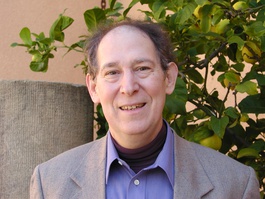
US warms up to the global climate change consensus
Published on
As Barack Obama inaugurates his mandate on 20 January, environmental scientists prepare their guidelines for a greener approach to energy production and usage. Is America ready to make the same changes? The word from Union Square farmers market and climatologist Dr. Stephen H. Schneider
There are farmers in New York State who drive to the Union Square green market in Manhattan to sell their organic produces and spend only $1 (75 cents or 69 pence) a gallon on fuel. Their tanks are full of cost-free vegetable oils, waste from restaurants’ deep friers that is then converted into biodiesel. Through the whole process, the dependence on foreign oil is zero. If they don’t exactly live the traditional American dream, they certainly live its environmentally friendly version.

Getting green and mean
In response to this, as well as to global warming, president-elect Barack Obama plans to boost the country’s energy efficiency and reduce its dependence on imported oil through increased production of alternative energy. These measures include increasing the production of green energy, improve its transportation system and lowering carbon emissions. The aim is to tackle the overheating of the planet and address national security at the same time. Once Steven Chu, Nobel laureate in physics and new secretary of energy, designs precise guidelines, the question for the new administration is how to build political and public consensus.
 Doubling the amount of alternative energy produced in America in three years is not as difficult as it may sound. As alternative sources currently supply only 7% of the energy consumed nationally. What will be more challenging is reducing carbon emissions by about 30% in twenty to thirty years, says Dr. Stephen H. Schneider. The climatologist is professor of biology and environmental studies at Stanford University and co-ordinating lead author in the intergovernmental panel on climate change, the institute that shared the Nobel peace prize with Al Gore in 2007.
Doubling the amount of alternative energy produced in America in three years is not as difficult as it may sound. As alternative sources currently supply only 7% of the energy consumed nationally. What will be more challenging is reducing carbon emissions by about 30% in twenty to thirty years, says Dr. Stephen H. Schneider. The climatologist is professor of biology and environmental studies at Stanford University and co-ordinating lead author in the intergovernmental panel on climate change, the institute that shared the Nobel peace prize with Al Gore in 2007.
Obama’s smart plan
In order to produce green energy, the US doesn’t only have to build more wind farms and solar powers. It will also have to replace existing power plants with more environmentally friendly technologies. The produced energy has to be distributed throughout the country. To accomplish this, Obama envisages a ‘smart grid’. The flexible system will be able to produce wind energy in California and solar energy in Arizona. Through integrated wires and grids, it will transport it to regions where green energy can’t be generated. A back-up system will avoid energy shortages in cases of blackouts or any sort of malfunctioning. Energy final destinations, federal buildings and private homes are also involved in Obama’s plan. A million buildings a year are to become more energy efficient in the next few years.
 The leading principle is one of whole system accounting. This means that the smart grid would be planned based on a national view of where and how energy is produced, transported and used, says Schneider. Obama’s proposed ‘cap-and-trade scheme’ would follow the same principle. True tons of carbon emissions would be measured from when the energy is produced through its transport and use at a company location. Once certain quotas are allocated to firms, they could buy and sell their permits on the stock market. These policies will not only decrease the dependence upon foreign oil, whose cost is anyhow not forecast to decline, but also create green jobs and thus boost the economy. ‘Obama is sensible in linking three key issues: the economy, national security and the environment,’ says Schneider.
The leading principle is one of whole system accounting. This means that the smart grid would be planned based on a national view of where and how energy is produced, transported and used, says Schneider. Obama’s proposed ‘cap-and-trade scheme’ would follow the same principle. True tons of carbon emissions would be measured from when the energy is produced through its transport and use at a company location. Once certain quotas are allocated to firms, they could buy and sell their permits on the stock market. These policies will not only decrease the dependence upon foreign oil, whose cost is anyhow not forecast to decline, but also create green jobs and thus boost the economy. ‘Obama is sensible in linking three key issues: the economy, national security and the environment,’ says Schneider.
The economic crisis could ease the changes that America needs to make in its energy production, as people are willing to learn new skills to get a job. At the same time, the scarcity of capital produced by the economic meltdown doesn’t help investments in fields that are not considered highly profitable yet. America needs real investments as well as a real political commitment, according to an ‘optimistic, but also realistic’ Schneider. ‘We need a reasonable set of rules consistent through political parties and then at an international level.’ Congress’ task is to build a coalition without any opposition of special interests and pass environmentally-friendly legislation. The US has the chance to now develop a cap-and-trade scheme avoiding its flaws experimented by the Europeans, who pioneered in the field of environment protection, says Schneider.
The difference between Europe
But America is facing tougher political challenges than Europe, as the general public is indifferent, nervous or suspicious of environmental policies, Schneider goes on. In Europe, 85% favour these policies, whereas in the US it stalls around 60%. This makes it politically risky for elected officials to support environmental reforms. However, after more active hurricane seasons and a big political shift, Americans are more worried and possibly more receptive to such issues than they were in 1993, when the Clinton-Gore plan failed because of the lack of political support.
85% of Europeans favour environmental policies. In the US, it stalls at 60%
Most importantly, young people’s involvement in green issues is increasing. ‘It has been gratifying to look at the enthusiasm of young people,’ says Schneider. Ten years ago his taught his class in controlling climate change in front of an audience of twenty students. Today he has 150 auditors. ‘Both Europe and young people are critically important to the urgent task of avoiding catastrophic climate change,’ says Robert Engelman, vice-president of programmes at the Worldwatch Institute and project co-director for the recently published State of the World 2009. The book indicates a worldwide political will to shift to renewable energy as well as mass public support for fundamental factors to save the global climate. Once the politicians agree on the policies, people have to understand them and subsequently opt for new ways of living.
Young shoppers talk policy
 ‘I’m actually not entirely clear on what his policies are,’ admits Jacob Lehman, a 28-year-old book editor. Most of the young people who shop at the Union Square green market say that the new plan for cleaner energy is not easily understood. Their attention to green issues comes from personal interest, rather than from the fact that Obama’s government has been the most committed to a renewable energy economy in American history. Others believe that Obama’s charismatic personality will draw more attention to climate change issues in the same way it gained him so much political support, especially among the youngsters. According to Gallup polls, Americans’ confidence in him as a president still ranks at 65%.
‘I’m actually not entirely clear on what his policies are,’ admits Jacob Lehman, a 28-year-old book editor. Most of the young people who shop at the Union Square green market say that the new plan for cleaner energy is not easily understood. Their attention to green issues comes from personal interest, rather than from the fact that Obama’s government has been the most committed to a renewable energy economy in American history. Others believe that Obama’s charismatic personality will draw more attention to climate change issues in the same way it gained him so much political support, especially among the youngsters. According to Gallup polls, Americans’ confidence in him as a president still ranks at 65%.
In many people’s minds, Obama will act as a powerful leader – able to direct the efforts of change. But his green policies are not a question of exerting charisma, but rather of drawing on political consensus and common sense. Common sense that many feel has been missing in America and other regions of the world for far too long. ‘It was 65 degrees in New York last week,’ says Allison Lardner, 29, a regular at the Union Square farmers market. ‘If you don’t believe in global warming, you’d better wake up.’



